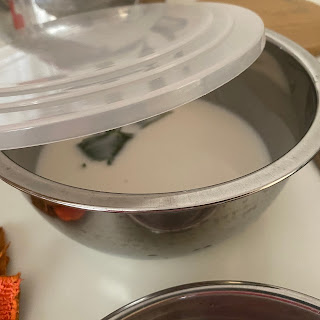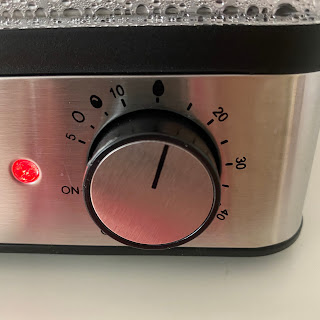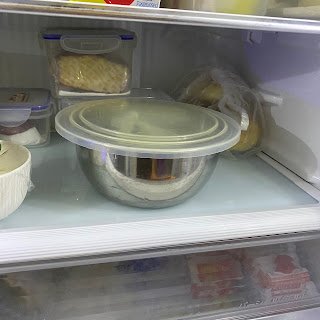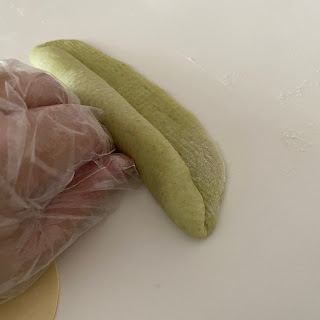A popular steamed rice cake with a honeycomb-liked structure, and infused with faint alcohol aroma from a short fermentation of the rice batter. Maybe my steamer's steam was too strong, and the cake was too thick, the honeycomb-liked structure was a little messy. However, the springy taste of the cake was wonderful, and it was neither sour, nor too sweet 😍
Servings: two cakes in two 14x7x2.5cm rectangular mould
Ingredients
70g rice flour60g water
100g water
45g fine sugar
1 blade of pandan leaf, optional
1/4 tsp instant dry yeast
1 tsp water
1/2 tsp rice bran oil/mild flavour vegetable oil
Directions
1. Mix rice flour with 60g of water into a smooth paste in a heat resistant mixing bowl. Set aside.2. Boil 100g water with 45g fine sugar and pandan leaf, till the sugar dissolves.
3. Pour the hot pandan-syrup from Step 2 into the rice paste in Step 1. Stir to mix well.
4. Transfer the bowl to a water bath heat over low temperature. Stir regularly to prevent the rice paste from forming lump at the base of the bowl.
When rice paste started to form lumps, remove the mixture from the heat.
Continue to stir till all the lumps disappear. The rice batter should be smooth and slightly thickened. Cover the rice batter partially, and allow it to cool down to below 35℃.
5. While waiting for the rice batter to cool down, activate the yeast by sprinkling the instant dry yeast over 1 tsp of water. Need not stir the mixture. Let it stands for about 30 minutes, or till frothy.
6. When the rice batter has cooled down to below 35℃, stir in the yeast mixture from Step 5.
Cover and let it ferment in room temperature for about 150 to 180 minutes, or till you can smell a nice alcohol aroma.
The rice batter will be filled with air bubbles at the end of the fermentation.
7. Mix about 1/2 tsp of mild flavour vegetable oil to the rice batter.
8. Start to heat up a steamer. Pour the batter into two moulds coated with a thin layer of vegetable oil.
Steam for about 15 minutes, off the power, and let the cakes stand in the steamer for another 5 minutes.
Use a cake tester to check the doneness of the cakes.
9. Allow the cakes to cool down over a wire rack.
Remove from the moulds and cut into your desired shape and size 😋

























































